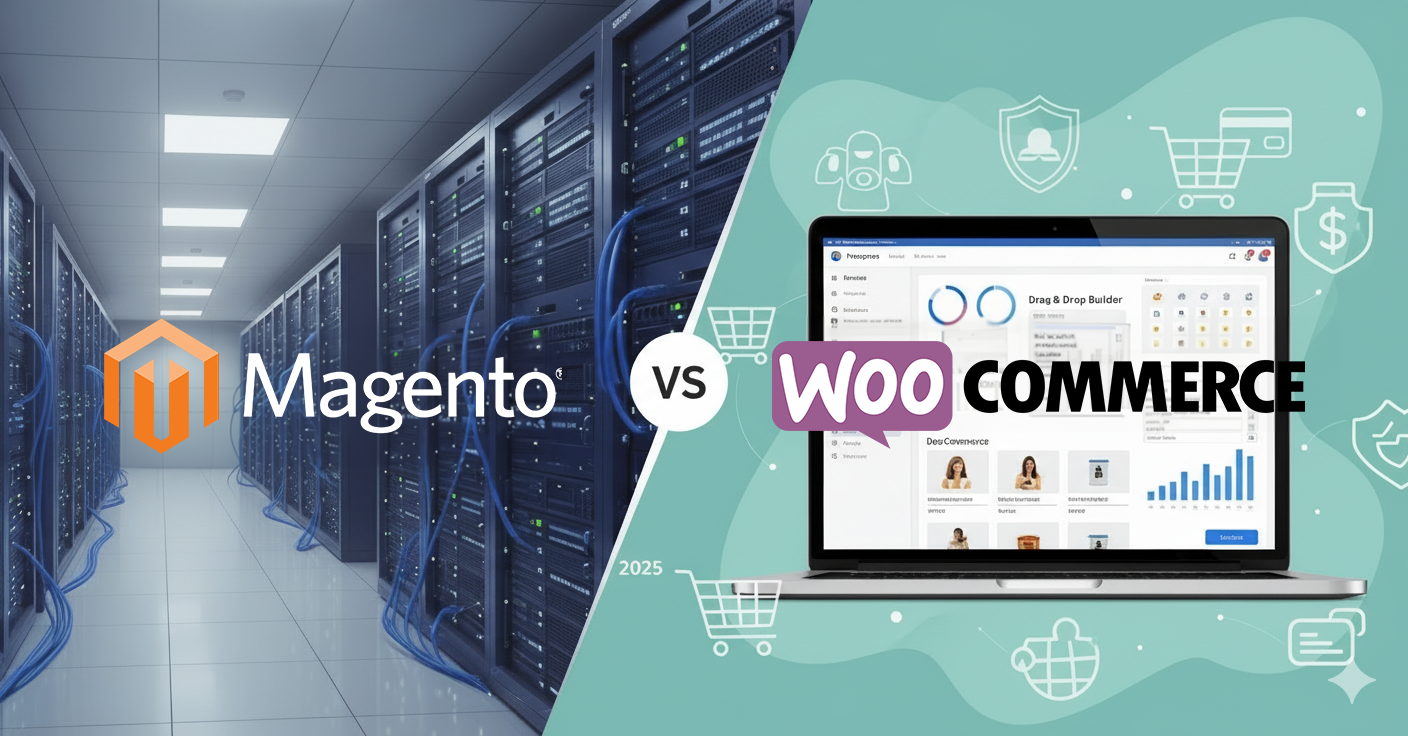E-commerce platforms are not all built the same, and the platform you choose can define how smoothly your store runs, how easily you scale, and how flexible your future growth looks. Shopware has earned its place as one of the most respected platforms in Europe, but it’s not for everyone. Many merchants eventually search for a Shopware Alternative because their needs change — whether it’s pricing, ease of use, scalability, or feature set.
This article walks you through 11 strong Shopware 6 Alternative platforms you can realistically consider. we’ll keep the explanations straightforward and focused: what each platform does best, where it falls short, and who it’s right for.
What is Shopware?
Shopware is a German-built e-commerce platform with a reputation for flexibility and storytelling-driven product experiences. Merchants often choose it for its modular architecture, ability to manage multiple stores, and strong localization for European markets.
So, what is Shopware in practice? It’s a system designed for merchants who want control. You can extend it with plugins, customize it to fit B2B or B2C workflows, and manage large catalogs. It’s particularly popular in Germany and other EU countries because of its built-in compliance and localization features.
That said, this same control can also be its challenge. Running Shopware effectively usually means having either an in-house tech team or a reliable agency partner. For some businesses, that’s perfect; for others, it’s too heavy. That’s when the search for a Shopware Alternative begins.
Top 11 Shopware Alternatives for Your E-commerce Store in 2025

Here are the platforms most merchants turn to when considering an Alternative Shopware solution.
1. Shopify (and Shopify Plus)
Overview
Shopify is the industry-visible SaaS giant for e-commerce, designed for instant launches, low maintenance, and scalability. Shopify Plus is the enterprise tier, unlocking advanced features like automation, higher API access, and better customer support.
Key Features
- Fully hosted solution — security, updates, and uptime handled by Shopify.
- Drag-and-drop editor with a large theme store.
- Huge app marketplace (over 8,000 apps) to extend functionality.
- Built-in Shopify Payments and integration with 100+ gateways.
- Multi-channel selling — online, in-store via POS, and across social media.
Pros & Cons
Pros:
- Lightning-fast setup and easy to manage.
- Predictable pricing with no hosting overhead.
- Massive ecosystem of apps, agencies, and freelancers.
- Excellent for global sales with built-in localization.
Cons:
- Limited customization for backend workflows — what you can’t achieve with apps often needs workarounds.
- Transaction fees if not using Shopify Payments.
- Higher cost at scale, especially with apps and Plus licensing.
Ideal Use Case
Great for businesses that prioritize simplicity, speed, and growth without server headaches. From startups to large D2C brands, Shopify scales well. For enterprises needing more complexity, Shopify Plus adds muscle.
Reviews
Merchants praise Shopify for reliability and ease of use. Complaints focus on app costs and inflexibility for very custom workflows.
Pricing
Core plans range from ~$29 to $399/month. Shopify Plus starts around $2,000/month depending on requirements.
2. Adobe Commerce (Magento)
Overview
Adobe Commerce (Magento) is the veteran in customizable, self-hosted commerce platforms. With deep extensibility, B2B-ready architecture, and support for complex multi-store setups, it’s a flexible powerhouse, if you’re ready to invest.
Key Features
- Highly extensible with thousands of extensions and themes.
- Robust B2B features: custom catalogs, account hierarchies, and quote management.
- Multi-store, multi-language, and multi-currency out of the box.
- Deep customization of checkout, pricing, and promotions.
- Strong API framework for integrations with ERP, CRM, and PIM systems.
Pros & Cons
Pros:
- Unmatched flexibility and scalability.
- Advanced B2B capabilities.
- Large global developer community.
- Open-source version available for free.
Cons:
- Requires significant technical expertise.
- Expensive to develop, host, and maintain.
- Longer implementation timelines than SaaS solutions.
Ideal Use Case
Best for large enterprises with complex workflows, high transaction volumes, and resources to manage custom development.
Reviews
Merchants admire its flexibility, but smaller businesses often find the costs prohibitive.
Pricing
Magento Open Source is free. Adobe Commerce enterprise licensing depends on revenue, starting in the tens of thousands per year.
3. WooCommerce
Overview
WooCommerce is a plugin that transforms WordPress into a fully functional online store. It’s flexible, open-source, and especially powerful for businesses where content marketing plays a central role. WooCommerce leverages WordPress’s popularity, giving merchants access to both a huge CMS and a robust commerce engine.
Key Features
- Direct integration with WordPress, ideal for content + commerce.
- Extensive plugin ecosystem for SEO, shipping, payments, and customizations.
- Flexible product management, from simple items to subscriptions.
- REST API support for integrations.
- Choice of hosting providers — from shared hosting to enterprise WordPress hosts.
Pros & Cons
Pros:
- Free core software.
- Ideal for SEO and content-driven stores.
- Flexible and highly customizable.
- Large support community and developer base.
Cons:
- Performance can degrade with too many plugins.
- Hosting, updates, and security are your responsibility.
- Complex setups need experienced developers.
Ideal Use Case
Content-rich brands, publishers, and lifestyle companies where editorial content and SEO drive traffic and sales.
Reviews
Users value its balance of flexibility and affordability. Negative reviews point to plugin conflicts and performance scaling issues.
Pricing
Free plugin. Costs come from hosting ($10–$100+ per month), premium themes, and extensions.
4. BigCommerce
Overview
BigCommerce is a SaaS platform often seen as Shopify’s main competitor. While Shopify relies heavily on apps, BigCommerce offers more built-in features out of the box, making it attractive for merchants who want fewer dependencies on third-party add-ons. It also caters well to headless commerce setups.
Key Features
- Native support for multi-currency and international selling.
- Strong SEO features with customizable URLs and schema support.
- B2B functionality such as custom pricing, quotes, and account management.
- Powerful API layer for headless commerce.
- No transaction fees on any plan.
Pros & Cons
Pros:
- Richer native functionality compared to Shopify.
- Built for scaling without heavy reliance on apps.
- Good fit for headless builds.
- Reliable SaaS infrastructure with strong uptime.
Cons:
- Smaller app ecosystem compared to Shopify.
- Annual sales thresholds can bump you into higher-priced tiers unexpectedly.
- Less mainstream compared to Shopify — fewer off-the-shelf integrations.
Ideal Use Case
Mid-sized to enterprise merchants that want SaaS simplicity, strong built-in tools, and room to scale into headless.
Reviews
Merchants highlight its power out-of-the-box. Some note pricing jumps when revenue grows.
Pricing
Plans start at ~$39/month, with higher tiers scaling with revenue. Enterprise plans are custom.
5. PrestaShop
Overview
PrestaShop is an open-source e-commerce platform particularly popular in Europe. It’s a middle ground between lightweight platforms like OpenCart and heavyweight ones like Magento. PrestaShop gives merchants modular flexibility with thousands of add-ons, without the licensing fees of enterprise platforms.
Key Features
- Multi-language and multi-currency support designed for cross-border selling.
- Modular architecture with over 4,000 add-ons.
- Back-office system for managing products, promotions, and taxes.
- Open-source code with strong community input.
- Cloud hosting option for those who don’t want self-hosting.
Pros & Cons
Pros:
- Free to use at its core.
- Strong focus on European markets.
- Lighter learning curve compared to Magento.
- Good selection of themes and add-ons.
Cons:
- Many advanced features require paid modules.
- Ecosystem is smaller than WooCommerce or Magento globally.
- Scalability requires optimization and strong hosting.
Ideal Use Case
Small-to-medium merchants, especially in Europe, who want control and localization without enterprise-level investment.
Reviews
Merchants like its affordability and EU readiness. Downsides include reliance on third-party modules and scaling challenges.
Pricing
Free to download. Paid modules (€50–€500 each) and hosting are the main costs.
6. commercetools
Overview
commercetools is one of the leaders in the composable commerce movement. Unlike traditional e-commerce platforms, it isn’t about one monolithic solution but about building a flexible system from smaller, API-based components. It’s designed for enterprises that want to future-proof their e-commerce architecture with headless, microservices, and API-first principles.
Key Features
- Microservices architecture allows businesses to pick and scale specific services independently.
- Headless flexibility — design custom storefronts using frameworks like React, Vue, or Angular.
- Omnichannel support — unify product data across online shops, apps, kiosks, IoT, or voice assistants.
- Extensive APIs for products, inventory, pricing, checkout, promotions, and personalization.
- Cloud-native scaling built for global performance.
Pros & Cons
Pros:
- Extremely flexible; adapts to custom business models.
- Future-proof design for brands embracing composable commerce.
- Supports advanced omnichannel retail strategies.
Cons:
- High initial cost — not suited for SMBs.
- Complex architecture requiring skilled developers and integration partners.
- Longer implementation timelines compared to SaaS platforms like Shopify.
Ideal Use Case
Large-scale retailers and global enterprises investing in long-term digital ecosystems with multiple sales channels.
Reviews
Highly praised by technical teams and CIOs for composability. Criticism comes from the steep cost and complexity for non-enterprise merchants.
Pricing
Enterprise-only pricing model. Typically negotiated contracts based on GMV, API calls, and support tiers.
7. Salesforce Commerce Cloud
Overview
Salesforce Commerce Cloud (SFCC) is a cloud-native enterprise platform built for large retailers who already use Salesforce’s CRM and marketing suite. It’s designed for omnichannel commerce, bringing AI personalization and advanced integrations directly into the sales process.
Key Features
- Einstein AI provides personalized product recommendations, search, and promotions.
- CRM integration with Salesforce Sales and Marketing Cloud for 360° customer insights.
- Global scalability for enterprise-level infrastructure and support.
- Omnichannel commerce across digital, mobile, and in-store experiences.
- Pre-built integrations with marketing automation and service tools.
Pros & Cons
Pros:
- Strong integration into the Salesforce ecosystem.
- Enterprise-grade support and SLA guarantees.
- Built-in AI tools for personalization.
Cons:
- Very high licensing and implementation costs.
- Requires specialized Salesforce expertise.
- Not suited for smaller or mid-market merchants.
Ideal Use Case
Global enterprises already invested in Salesforce CRM and marketing tools, who want a unified ecosystem.
Reviews
Enterprises value the end-to-end integration and personalization capabilities. SMBs avoid it due to cost.
Pricing
Enterprise-level pricing. Custom quotes based on revenue, scale, and integrations.
8. VTEX
Overview
VTEX is a cloud commerce platform with strong marketplace and B2B capabilities. It started with a focus in Latin America but has grown into a global solution for large retailers. VTEX emphasizes flexibility for businesses that want to run marketplaces or combine B2B and B2C within one system.
Key Features
- Native marketplace engine to allow third-party sellers on your platform.
- Unified B2B and B2C capabilities with pricing, catalogs, and workflows.
- Headless-ready APIs for integrating with custom frontends.
- Multi-channel selling including online, physical stores, and marketplaces.
- Cloud-native performance with global reach.
Pros & Cons
Pros:
- Built-in marketplace functionality without custom modules.
- Strong global commerce support, especially in LATAM.
- Good balance of SaaS simplicity with extensibility.
Cons:
- Expensive for small to mid-market merchants.
- Ecosystem and developer pool smaller compared to Shopify or Magento.
Ideal Use Case
Retailers wanting to create marketplaces or combine B2B and B2C in one platform. Especially strong for enterprise retailers with global reach.
Reviews
Retailers praise its marketplace-first approach. Some note integration complexity and high cost.
Pricing
Enterprise-level pricing, tailored to GMV and implementation needs.
9. OroCommerce
Overview
OroCommerce is one of the very few platforms built exclusively for B2B e-commerce from the ground up. While most platforms try to adapt B2C systems to fit B2B workflows, OroCommerce was designed to meet the unique needs of manufacturers, wholesalers, and distributors who sell in bulk, negotiate contracts, and handle complex corporate purchasing processes.
It’s open-source at its core, giving flexibility for businesses that need specialized flows, and also offers an enterprise edition with extended features and support.
Key Features
- Corporate account structures that support multiple buyers within one customer organization, complete with roles and permissions.
- Custom pricing rules and catalogs so each client sees their own product mix and pricing agreements.
- Quote and negotiation workflows for handling requests for quotes (RFQs), approvals, and counteroffers directly within the platform.
- Advanced B2B ordering features like quick order forms, bulk ordering, and requisition lists.
- Integration-ready with ERP, CRM (including OroCRM), and PIM systems.
Pros & Cons
Pros:
- Purpose-built for B2B commerce—out-of-the-box features align with corporate sales.
- Open-source flexibility lets businesses customize deeply.
- Strong community and enterprise support options.
Cons:
- Limited consumer-focused storefront capabilities.
- Smaller ecosystem compared to giants like Magento or WooCommerce.
- Best results require experienced B2B implementation partners.
Ideal Use Case
Perfect for manufacturers, distributors, and wholesalers where complex B2B workflows—negotiated pricing, RFQs, and bulk orders—are the backbone of business.
Reviews
Merchants consistently highlight its depth in B2B. Negative feedback often points to a steeper learning curve and limited ecosystem compared to mainstream platforms.
Pricing
Community edition is free. Enterprise edition comes with custom pricing based on business scale and support needs.
10. OpenCart
Overview
OpenCart is a lightweight, open-source platform designed for smaller businesses who want an online shop without the complexity of enterprise systems. It’s one of the most accessible self-hosted solutions available, making it a frequent starting point for entrepreneurs.
Key Features
- User-friendly admin panel for managing products, customers, and orders.
- Built-in support for multiple stores from a single admin panel.
- Extension marketplace with thousands of modules for payments, shipping, and marketing.
- Basic reporting tools to track sales, customers, and product performance.
- Open-source codebase allows developers to customize it freely.
Pros & Cons
Pros:
- Free to download and easy to install.
- Lightweight, meaning it doesn’t demand heavy hosting resources.
- Suitable for beginners and small catalogs.
Cons:
- Lacks advanced features out of the box.
- Extensions vary in quality, and support often depends on third-party developers.
- Scalability issues—larger catalogs or heavy traffic can slow down performance.
Ideal Use Case
Best suited for small online retailers, startups, and entrepreneurs who want to get online quickly with minimal investment and technical overhead.
Reviews
Users appreciate its simplicity and low cost. Common frustrations are limited functionality compared to modern SaaS platforms and reliance on third-party extensions for even basic features.
Pricing
The core software is free. Costs arise from hosting, premium themes, and extensions.
11. Ecwid (by Lightspeed)
Overview
Ecwid is a lightweight, embeddable e-commerce solution that lets businesses add a store to an existing website or social channel. Unlike traditional platforms, you don’t need to build a full storefront from scratch, Ecwid embeds into what you already have. It’s ideal for small sellers, creators, or service providers who want to start selling without technical complexity.
Key Features
- Embeddable store widget that works on any site (WordPress, Wix, custom HTML).
- Omnichannel selling from one dashboard: website, Facebook, Instagram, Amazon, eBay, and more.
- Mobile-friendly designs with responsive checkout.
- Automated updates and security included (fully SaaS).
- Multiple payment gateways integrated natively.
Pros & Cons
Pros:
- Extremely fast setup, often within minutes.
- Doesn’t require rebuilding an existing website.
- Affordable with a free plan for small catalogs.
- Seamless multi-channel sales management.
Cons:
- Not designed for large inventories or enterprise requirements.
- Limited customization compared to open-source or larger SaaS platforms.
- App marketplace is smaller than Shopify’s or WooCommerce’s.
Ideal Use Case
Best for freelancers, creators, local businesses, and small brands who already have a website or social presence and just want to start selling quickly.
Reviews
Praised for speed and simplicity. Some negative reviews focus on limitations when businesses grow beyond Ecwid’s scope.
Pricing
Free plan for up to 10 products. Paid plans start around $15/month, scaling with catalog size and features.
Why Look for a Shopware Alternative?

You don’t swap platforms for drama — you do it because the tool no longer fits the job. That’s the practical truth.
Here are the common, real-world triggers that push teams to look at a Shopware alternative, explained simply so you can find where you sit.
1. Performance and maintenance wear you down
If you’re running Shopware self-hosted or with heavy customizations, someone is always fixing updates, security, or server issues. That slow burn takes time away from growth work (marketing, product, partnerships). If your team is spending more cycles on ops than on selling, that’s a very good reason to consider a different platform.
2. Cost structure and total cost of ownership (TCO) don’t add up
License is only one line in the budget. Hosting, patches, third-party modules, development to add features, and migration work all add up. Sometimes a SaaS platform with predictable monthly costs and included maintenance lowers your real yearly spend — even if the list price looks higher at first glance.
3. You need features that Shopware doesn’t offer out of the box
Maybe you need native marketplace support, tighter headless capabilities, specific B2B workflows (quotes, requisitions, per-customer catalogs), or simpler multi-currency, multi-channel selling. If Shopware needs large amounts of custom code to get you there, an alternative that provides these features natively will save time and risk.
4. Your growth plan changed (scale, markets, channels)
Expanding into new regions, launching marketplaces, or going headless for multiple frontends changes platform requirements fast. Some platforms are purpose-built for those moves and will scale more cleanly than retrofitting Shopware.
5. You don’t have the developer resources or want to shift focus
Not every team wants to manage a platform stack. Some prefer to invest in merchandising, content, and customer acquisition while leaving platform upkeep to a vendor. If that’s you, SaaS is attractive.
6. SEO, conversion, and mobile UX need a lift
If your pages are slow or mobile checkout leaks conversions, this is a product problem — and sometimes the platform is the friction point. Moving to a platform that supports faster frontends or has stronger native performance tools can directly improve revenue.
7. Compliance and localization headaches
If VAT, invoicing rules, or local payment options require constant custom fixes, a platform with better localization for your key markets will reduce friction and risk.
In short, merchants look for a Shopware Alternative when the platform becomes more of a limiter than an enabler. The move isn’t always necessary — sometimes a focused audit and a few fixes will do — but when your roadmap or resources change, choosing the right alternative becomes the most practical step.
Which platform is right for you?
Pick the platform that fixes the three things that hurt your business today — not the one with the longest features list. Start by naming those three problems (for example: “server upkeep,” “losing checkout conversions,” “need per-customer pricing”). Match each problem to a platform type:
If you need to stop running servers and move fast, choose a hosted SaaS (Shopify, BigCommerce, Ecwid). If content and SEO drive sales, choose a content-first stack (WordPress + WooCommerce).
If your business depends on complex rules, custom pricing, or multi-brand catalogs, pick a customizable platform (Adobe Commerce / Magento or OroCommerce for B2B). For future-proof, multi-channel builds, choose headless/composable (commercetools).
Quick checklist to shortlist two finalists:
- Can it connect to your ERP/PIM/payments without expensive middleware?
- What’s the realistic 24-month cost (platform + hosting + dev)?
- Will your top revenue flows work on day one (checkout, tax, shipping, B2B rules)?
Run a short proof-of-concept on the two finalists for the one or two customer journeys that generate the most revenue. That small test exposes the real risks and shows which platform reduces operational friction rather than just promising features.
How can BrandCrock help you?
BrandCrock turn platform choice into a low-risk, business-first project. Short version of what we do and why it helps:
- Fast audit (2–5 days) — we show what’s costing you time or revenue in Shopware (technical debt, SEO risk, integrations) and give a 24-month cost comparison: stay vs. migrate.
- Targeted shortlist + POC (1–4 weeks) — we recommend two platforms matched to your constraints and build a focused proof-of-concept that proves the critical checkout/integration path works.
- Migration plan & execution — phased plan with data mapping, full redirect strategy, middleware/integration build, staged cutover and rollback options. We run the implementation or co-deliver with your team.
- Post-launch stabilization & ops — 30/60/90-day tuning, conversion checks, and optional managed support so your team can focus on growth.
Why BrandCrock? We measure success by reduced risk and measurable outcomes (less ops, faster launches, preserved SEO, smoother checkout). We give clear cost buckets, practical timelines, and hands-on delivery. If you want a quick win, send your top three Shopware pain points and we’ll return a one-page shortlist + the single POC to run first.
Final thoughts
Choosing a Shopware Alternative comes down to tradeoffs. If you want speed and minimal ops, choose a SaaS. If you want control and deep B2B workflows, pick a self-hosted or composable solution. If you sell in Germany and need localized features, Shopware remains a strong pick, but there are solid Alternative Shopware options depending on your needs.
If you want, we can:
- Shortlist the top 2 alternatives for your store in a 1-page comparison.
- Create a migration checklist specific to your store (data, plugins, SEO redirects).
- Build a costed rollout plan showing timeline and risks.
Say the word and we’ll map the next step — practical, direct, and zero fluff.








